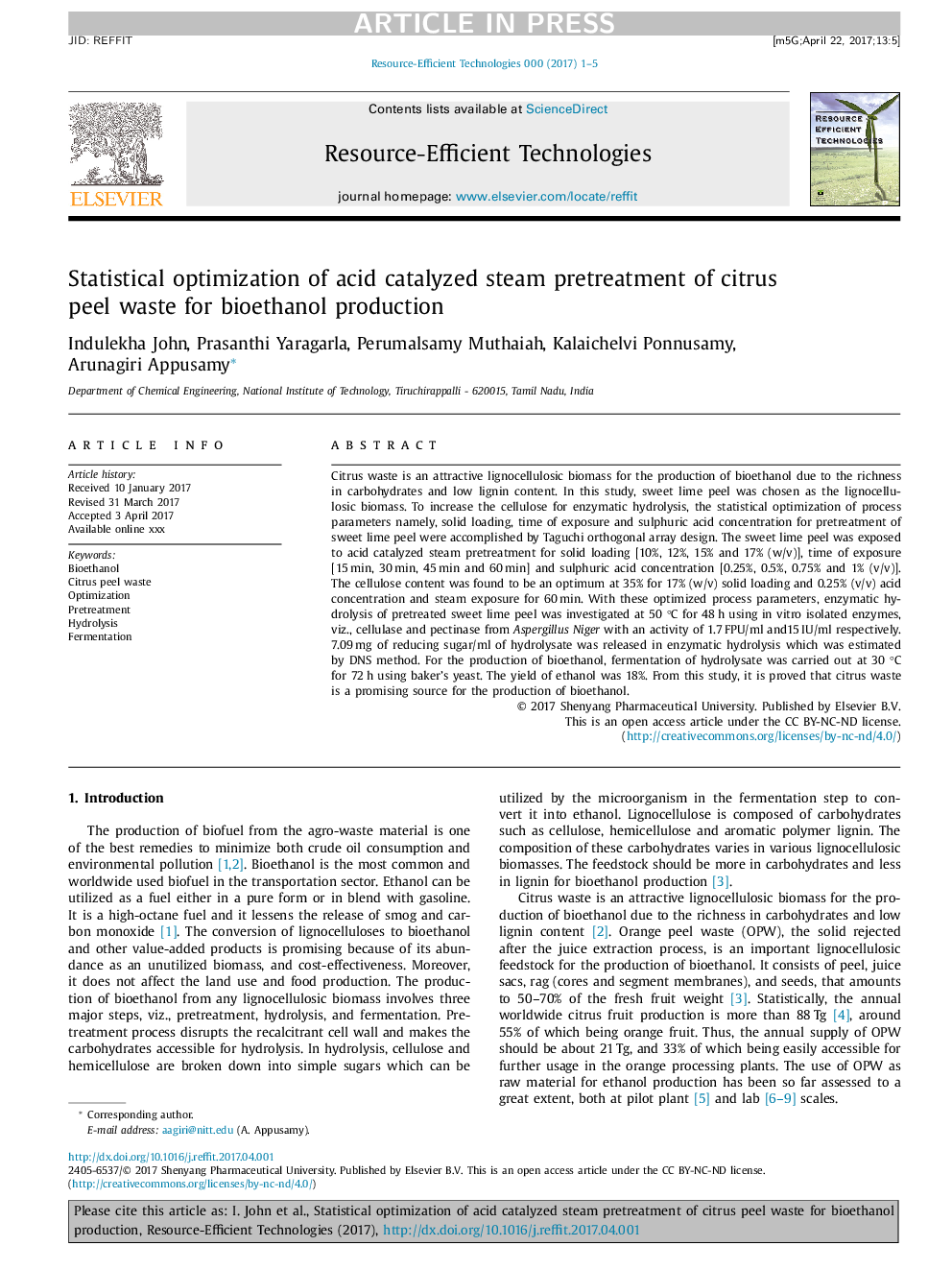| Article ID | Journal | Published Year | Pages | File Type |
|---|---|---|---|---|
| 8858113 | Resource-Efficient Technologies | 2017 | 5 Pages |
Abstract
Citrus waste is an attractive lignocellulosic biomass for the production of bioethanol due to the richness in carbohydrates and low lignin content. In this study, sweet lime peel was chosen as the lignocellulosic biomass. To increase the cellulose for enzymatic hydrolysis, the statistical optimization of process parameters namely, solid loading, time of exposure and sulphuric acid concentration for pretreatment of sweet lime peel were accomplished by Taguchi orthogonal array design. The sweet lime peel was exposed to acid catalyzed steam pretreatment for solid loading [10%, 12%, 15% and 17% (w/v)], time of exposure [15 min, 30 min, 45 min and 60 min] and sulphuric acid concentration [0.25%, 0.5%, 0.75% and 1% (v/v)]. The cellulose content was found to be an optimum at 35% for 17% (w/v) solid loading and 0.25% (v/v) acid concentration and steam exposure for 60 min. With these optimized process parameters, enzymatic hydrolysis of pretreated sweet lime peel was investigated at 50 °C for 48 h using in vitro isolated enzymes, viz., cellulase and pectinase from Aspergillus Niger with an activity of 1.7 FPU/ml and15 IU/ml respectively. 7.09 mg of reducing sugar/ml of hydrolysate was released in enzymatic hydrolysis which was estimated by DNS method. For the production of bioethanol, fermentation of hydrolysate was carried out at 30 °C for 72 h using baker's yeast. The yield of ethanol was 18%. From this study, it is proved that citrus waste is a promising source for the production of bioethanol.
Related Topics
Life Sciences
Environmental Science
Environmental Chemistry
Authors
Indulekha John, Prasanthi Yaragarla, Perumalsamy Muthaiah, Kalaichelvi Ponnusamy, Arunagiri Appusamy,
